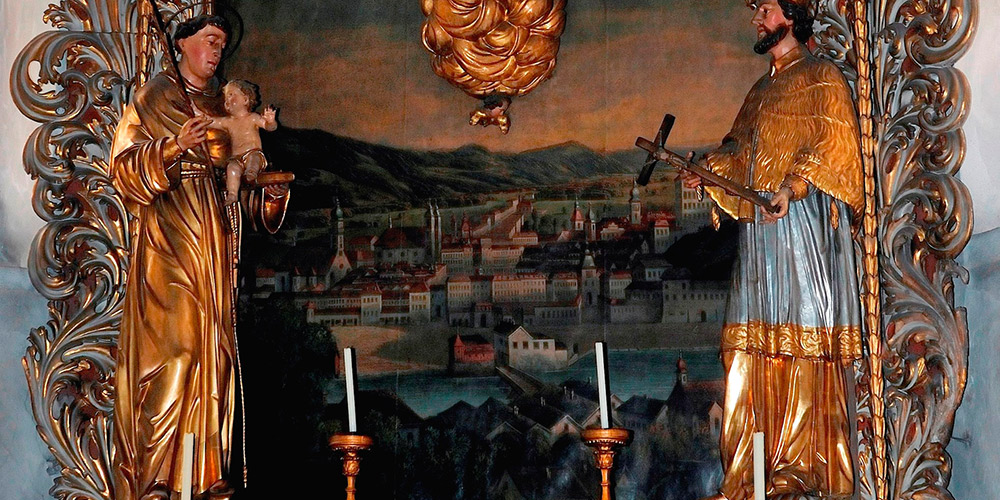
The more we look back into the history of the city of Linz, the more difficult is it to trace the lives of the people of that time. Which sources do historians like Dr. Cathrin Hermann from the Archives of the City of Linz need in order to trace a picture of Linz 500 years ago, she explains in this interview. Many of the sources have been destroyed over time – but not only by fires, one would think. In the 1820s enough space was missing in order to obtain traditional documents for future generations. A look back here is also a look into the future, because as we deal with with memories today, how will historians outline the present-day city of Linz in the year 2500? Did people even make such thoughts 500 years ago?
What sources do you use mainly to trace an image of Linz between 1500 and 1800? What are these documents or images that were obtained for 500 years?
Cathrin Hermann: For my presentation at Deep Space LIVE I can divide the sources into two broad areas: on the one hand, there are monuments and architectural sources, on the other hand there are archives and drawings. Monuments include historically significant buildings and small memorials such small monuments or donjon columns. They give us much information about the former urban architecture. In the written sources, we do have certificates and protocols of the city council that document the everyday trading. First of all protocols of council meetings offer a bright insight into the urban management and are a good source for studies of the former everyday life: Here the poor relief system was reported, the market system was structured and the urban infrastructure was described. In addition, the city council represented the gateway to the authorities.
Concerning the monuments, we are fortunately mostly dealing with highly durable materials, although here some was lost or greatly changed by the many fires, the architectonical change in recent centuries and by military influences.
Looking at all sources of paper – from the protocols of the city council, plans to the regulations or documents of a private nature – we benefit from the fact that the former paper has a very good quality. It consists of rags – textile fibers such as flax, hemp or nettle – which were often made from old clothes. They are characterized by high resistance to aging and tear strength. As for the certificates, they are made of parchment – animal skin – and are also characterized by a high persistence. The greatest dangers to documents was generally – in addition to water, fire, and military conflicts – the destruction by sorting out documents because lack of space. In Linz we lost by a large-scale shredding in the 1820s a large part of the archives from the Middle Ages.

If we look at the stories of that time, we have to rely on sources that have not been lost or destroyed until now. But even at that time, people certainly questioned themselves, what do they want to hand down to following generations. Can you give us an example of how historicans check the validity of such ancient sources?
Cathrin Hermann: Most of the documents are administrative records. Their task was therefore to establish a legal certainty and they did not served as a chronicle to deliver events for future generations. For example, the protocols of the city council had the task of documenting council decisions in a concise form. Next to the requests of citizens there was often missing information about their residence or their financial situation. However, it is not a omission in the sense of concealment. It was not recorded because it were generally known facts. If we take for example the council protocols to examine the arms supply in early modern Linz, we can not answer some questions from it alone. Only through the use of additional sources and a comparison with previous research on other cities a denser image will be possible.
A conscious concealment or an embellished representation for future generations was not the intended purpose of fake sources. Here it was rather directly about securing claims or rights. For this reason, such interference in documents or even the forgery of a document in the field of legal transactions occur. To give some examples: in privileges which guaranteed special rights in files that documented land ownership, and so on.
The case is more difficult with chronicles or private records. Here biased representations and skipping events are quite possible. In addition to the historical knowledge, here the “arsenal” of auxiliary historical sciences helps us: Thus, a palaeographical assessment can give us information about whether the font used in the document was written at this time in this area at all. Also, the material is a reference to the time of writing, the authenticity and possible changes. Also the textual structure of documents can be an evidence of their authenticity. This can be very exciting sometimes even when you feel like a detective, who gathers the different “clues”.
Art, technology and society – these are the three central themes of Ars Electronica. What was the status of these three themes in Linz in the early modern period?
The time between 1500 and 1800 is characterized by massive changes in many areas of life. Within the society, there were disavowals and wars caused by the Reformation and by the changing economic structure. In addition, the society was characterized by a high spatial mobility, which on the one hand, for example, favored the transport of knowledge, on the other hand it always led to conflicts. Look at the attempts of the local craft guilds to regulate or prohibit the work of itinerant craftsmen. Beside academics companied the imperial court, the landscaping school was one of the important training school in Linz.

The historian Dr. Cathrin Hermann completed her studies in history and art history at the Universities of Tübingen and Vienna. Since 2004 she is dealing with transliterations and collations of written sources of the 16th – 20th Century. As a cultural mediator at several institutions and collaborator at the Archives of the City of Linz she has already published several publications on the city’s history of women and gender.
Take a look back on THU February 27, 2014, 8 PM, during the “Deep Space LIVE: Merchants, Maidservants, Emperors” at the Ars Electronica Center, together with historican Cathrin Hermann into the Linz from 1500 to 1800.
